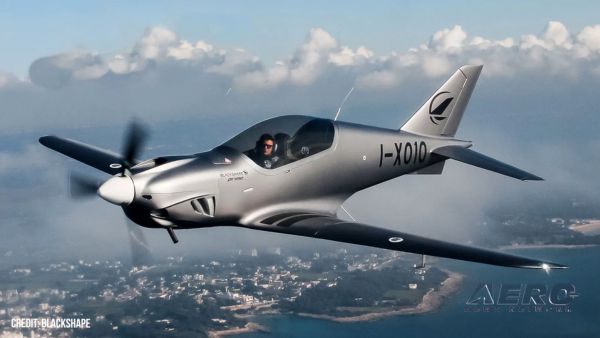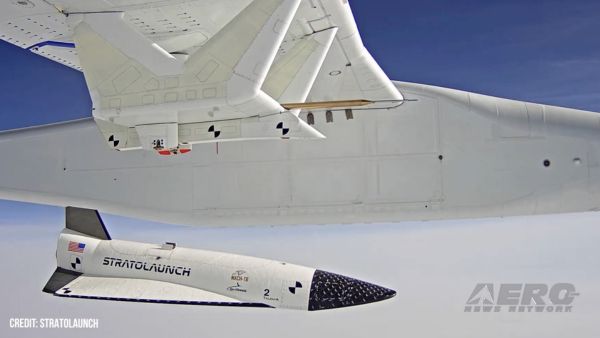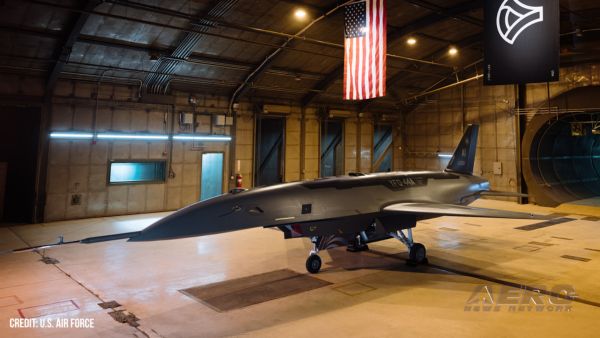Navy Awards Boeing $9.6B in Super Hornet and EA-18G
Contracts
The US Navy has awarded
Boeing a multiyear procurement contract valued at $8.6 billion for
the production of an additional 210 F/A-18 Super Hornets and a $1
billion contract for system design and development (SDD) of the
EA-18G airborne electronic attack aircraft.
Under the terms of the multiyear contract, the Navy will
purchase 42 aircraft in each of the fiscal years 2005 through 2009.
The agreement provides the Navy with the flexibility to increase
the quantity of aircraft on order by as many as six aircraft per
year. Deliveries for aircraft purchased in the second multiyear
will begin in fiscal year 2007.
The 5-year SDD program for the EA-18G runs from FY04 until early
FY09 and encompasses all laboratory, ground test, and flight tests
from component level testing through full-up EA-18G weapons system
performance flight-testing.
“This contract will keep the lines running and keep St.
Louis working,” said Sen. Christopher “Kit” Bond
(R-Mo.). “This is great news for the workers and their
families this holiday season. The F/A-18 Super Hornet platform
continues to serve as a model procurement program, consistently
producing aircraft ahead of schedule and under budget. Pound for
pound and dollar for dollar, the Super Hornet is the best tactical
aircraft the Navy operates.”
This is the second multiyear contract for the Super Hornet
program, which has already produced 170 of the aircraft for the
U.S. Navy. The first contract calls for the production of up to 222
Super Hornets and ends in 2004.
“The multiyear contract and the development contract for
the electronic attack variant ensure that the U.S. Navy has the
most capable, versatile and affordable fighter aircraft well into
the next century,” said John Lockard, senior vice president,
Naval Systems, for Boeing. “These contracts continue to
evolve the Super Hornet to latest technology and benefit our U.S.
Navy customer, the taxpayer, our suppliers, and our Boeing
workforce.”
Rick Smith, president of the International Association of
Machinists and Aerospace Workers Local 837, said the contract was a
sign of the government’s confidence in the Boeing
workforce.
“Congratulations to the men and women who make up Boeing
St. Louis’s fine workforce,” Smith said. “These
contracts are the U.S. government’s stamp of approval on
their terrific, high-quality work. This work helps extend the
site’s distinguished heritage of performance on contracts,
and helps lay the foundation for a bright future in St.
Louis.”
F/A-18 E/F Super Hornet
U.S. Navy Capt. B.D.
Gaddis, NAVAIR F/A-18 program manager, said one of the F/A-18
program’s great strengths is the stability of its procurement
accounts.
“Multi-year procurements have driven stability and
increased cost efficiencies with the program,” Gaddis said.
“The U.S. Navy realized around $750 million in cost savings
from the first Super Hornet Multi-Year contract. In the second
Multi-Year contract we've realized just over $1 billion in savings.
I would call that a pretty good return on investment. I think we've
built a lot of trust between NAVAIR, our program sponsors, OSD and
Congress with these types of contracts. We need to keep it
going.”
The Super Hornet program is introducing advanced technologies
and capabilities that will provide the U.S. Navy and Joint Forces
Commanders advanced connectivity and warfighting capability. Those
technologies include the Active Electronically Scanned Array radar
and the Advance Crew Station, which are in flight test. The
Advanced Target Forward Looking Infrared system and the Joint
Helmet Mounted Cueing System were used in Operation Iraqi
Freedom.
EA-18G
The EA-18G will provide the warfighter with abundant operational
flexibility. It can carry up to five ALQ-99 jamming pods and will
typically add two AIM-120 self-defense missiles and two AGM-88 High
Speed Anti-Radiation (HARM) missiles.
“While developing the EA-18G concept and configuration,
our design team maintained as much of the inherent growth capacity
in the F/A-18F as possible,” Lockard said. “The result
will be a platform designed to take advantage of the latest
airborne electronic attack and networking technologies, enabling
significant improvements in threat suppression.”
Upon initial fleet introduction the EA-18G will be capable of
self-protection, freeing up dedicated escort aircraft for strike
and other missions. It will be capable of rapidly locating and
destroying surface-to-air missiles.
In addition to standoff and escort jamming missions, speed,
maneuverability and advanced systems will enable the EA-18G to
perform time critical strike mission targeting support. By
combining two proven systems, the Boeing F/A-18F and the Northrop
Grumman ALQ-218(V)2 receiver, the U.S. Navy will maximize the
benefit of ongoing investments, while allowing for an initial
operational capability by 2009.
A Boeing-led industry team builds the Super Hornet. Boeing
builds the forward fuselage and wings and conducts final assembly.
Northrop Grumman Corp. is the principal airframe subcontractor,
supplying the center and aft fuselage and the principal electronic
combat system supplier for the EA-18G. General Electric Co.
produces the engines, and Raytheon Co. manufactures the
aircraft’s radar.
 ANN's Daily Aero-Term (05.05.25): Circle To Runway (Runway Number)
ANN's Daily Aero-Term (05.05.25): Circle To Runway (Runway Number) ANN's Daily Aero-Linx (05.05.25)
ANN's Daily Aero-Linx (05.05.25) NTSB Prelim: De Havilland DHC-1
NTSB Prelim: De Havilland DHC-1 Classic Aero-TV: The Boeing Dreamliner -- Historic First Flight Coverage
Classic Aero-TV: The Boeing Dreamliner -- Historic First Flight Coverage Airborne-NextGen 05.06.25: AF Uncrewed Fighters, Drones v Planes, Joby Crew Test
Airborne-NextGen 05.06.25: AF Uncrewed Fighters, Drones v Planes, Joby Crew Test


